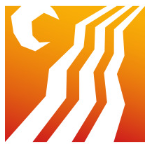The Credit Suisse Healthcare Database provides unique insights into the treatment of various diseases. It demonstrates that immuno-oncology as a cancer treatment has rapidly evolved into a global market worth more than $30 billion, with the potential for significant growth.
A journey through cancer treatment
Download PDF
Credit Suisse follows the therapeutic journey
The CS Healthcare database contains anonymous prescription claims data from approximately 122 million U.S. citizens, as well as additional medical claims data from up to half of the population. The database allows tracking of real-world drug use by indication (tumor type), which is not currently available from other data sources. It documents typical treatment courses and provides an overview of treatment persistence and adherence, common treatment cocktails, and conversions to specific drugs.
Cancer insights are particularly important given the breadth of the disease, the market growth rate, and the lack of information on commercially important new therapies in existing audit services.

Immuno-Oncology and PD-(L)1 Therapy
Immuno-oncology (IO) uses a patient’s own immune system to fight cancer. Immunotherapeutics are first evaluated in “metastatic” cancers (when the cancer spreads from the primary tumor site), where the unmet need is highest. Insights from the CS Healthcare database illustrate the potential offered by early and sequential use of IO therapy to enhance initial response.
PD-1 or PD-L1 inhibitors are a group of checkpoint inhibitor drugs that were first marketed in 2017. They work by blocking the activity of PD-1 and PD-L1 immune checkpoint proteins present on the cell surface. Blocking the binding allows T cells to kill tumor cells, using the body’s own immune system to fight cancer.
There are currently seven PD-1 or PD-L1 therapies approved by U.S. regulators for a variety of different tumor types. According to Evaluate Consensus data, global sales of these drugs are expected to grow by more than 50% by 2026 (beginning in 2021). Notably, the CS Healthcare database indicates that 20-30% of PD-(L)1 drug use occurs in tumor types that are not currently approved by the U.S. Food and Drug Administration (FDA). This is referred to as “off-label” use.
Infographic showing FDA-approved PD-1 and PD-L1 therapies through May 2022: Expected Sales Growth
Immuno-oncology Market Share by Disease Area
Immunotherapeutics are used in a variety of tumor types. By looking at the number of claims by “indication”, an implied market share by disease can be calculated. Lung cancer is the most common cancer worldwide; patients are often diagnosed late, with approximately 75% of patients diagnosed with metastasis. For most indications, the top-selling IO drug Keytruda is considered the preferred major brand.

Infographic showing the share of immuno-oncology drugs by disease area
”
Keytruda is increasing its share of new patients, with lung, gastrointestinal and breast cancers contributing the most to patient growth.
The Future of Immuno-Oncology
Global IO sales are expected to grow at a compound annual growth rate (CAGR) of approximately 10% from 2021 to 2027.i These therapies are seen as the backbone of future cancer treatments, with many companies exploring new combinations to enhance response and investigating drugs in early settings, such as adjuvant use (where tumors are more confined and patients are more likely to survive).
Translated with www.DeepL.com/Translator (free version)
